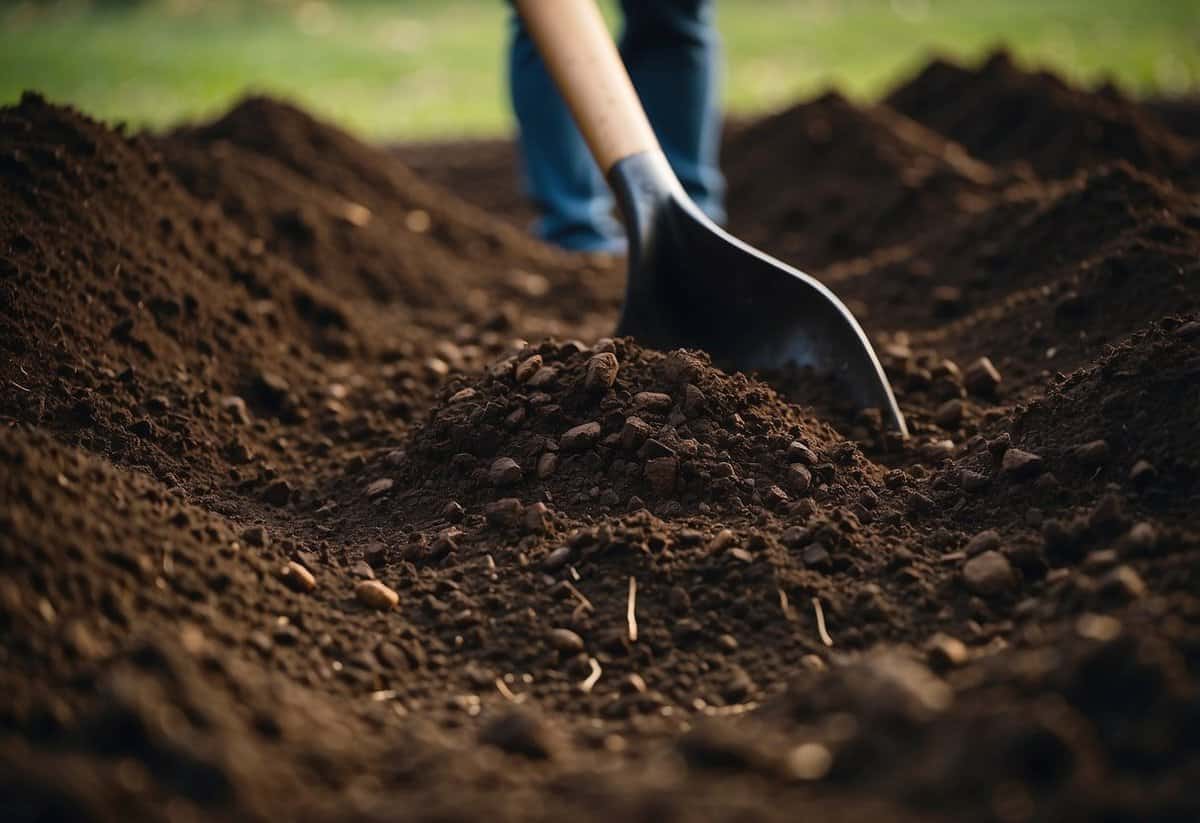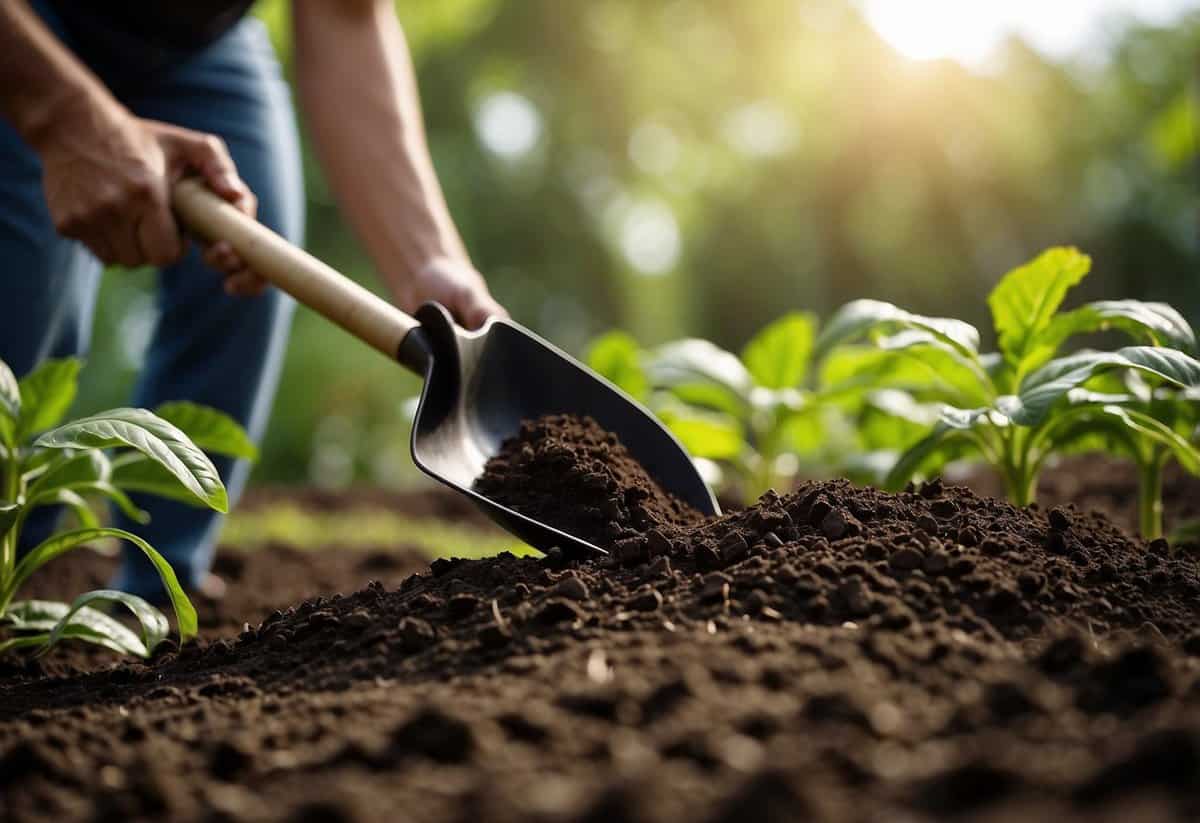Garden Soil Preparation Tips for Thriving Plants
Proper garden soil preparation is key to a successful and bountiful garden. Healthy soil provides the necessary nutrients and environment for your plants to grow strong and produce well. Understanding how to prepare your soil ensures that your garden will thrive season after season.

From loosening the soil to adding organic matter, there are several steps you can take to make sure your garden soil is just right. By giving your soil the attention it needs, you’re setting up your plants for the best outcomes possible.
1) Test Soil pH

Testing your soil’s pH is essential to know how well your plants will grow. Most plants thrive in slightly acidic to neutral soil, with a pH between 6.0 to 7.0.
You can use a lab test or an at-home kit. For the most accurate results, consider sending a sample to a state university soil lab. It’s easy and affordable.
If you prefer a DIY method, collect soil samples and mix them in a clean plastic bucket. Use distilled water to avoid skewing the results. Once you have your pH level, you can amend your soil as needed.
2) Add Compost

Adding compost to your garden soil can greatly improve its health. Mix compost into the top 4 to 6 inches of soil to enrich it with nutrients. This step is essential for a thriving garden.
You can also sprinkle compost around trees and shrubs as a mulch substitute. This helps to retain moisture and keeps the soil healthy.
For container plants, mix compost with your usual potting mix. This boosts water-holding capacity. Be cautious, too much compost can harm plant roots.
For more details, you can read about it here.
3) Till the Soil

Tilling the soil is key to getting your garden ready for planting. Start by marking the area you plan to till.
Clear any rocks and debris first. Then, set your tiller to a shallow depth for a new garden.
Make passes in straight, parallel lines. Overlap each pass slightly to ensure even coverage. This helps create a fluffy seed bed and mixes in compost. For more detailed instructions, visit this guide.
4) Remove Weeds

Weeding is essential to keep your garden healthy.
One effective method is to use a hoe or lawn mower to cut weeds close to the soil. This makes it hard for them to regrow.
Cover the soil with mulch like shredded leaves or wood chips. This blocks sunlight and stops new weeds from germinating.
A little table salt at the base of unwanted plants can also help.
For more tips, check out these natural ways to kill weeds.
5) Add Mulch

Mulch helps retain moisture in your garden soil and keeps weeds at bay. It also provides nutrients as it decomposes. Pick an organic mulch like wood chips or straw for the best results.
Apply mulch in early spring. Spread it evenly around your plants, but avoid piling it against stems. This prevents rot and pests. A 2-3 inch layer is usually enough. To learn more, visit Bob Vila’s guide.
6) Use Organic Fertilizers

Using organic fertilizers can greatly improve your garden’s soil health. They provide essential nutrients that your plants need to thrive.
Choose an organic fertilizer that’s right for your soil type. Look for ones that contain natural ingredients like compost, bone meal, or fish emulsion.
Apply the fertilizer by mixing it into the topsoil with a rake or hoe. This helps ensure the nutrients reach the plant roots. Regular application will keep your soil rich and productive.
For more detailed guidelines, visit this guide on organic fertilizers.
7) Test Drainage

Testing soil drainage is simple and important. Start by digging a hole about 12 inches wide and 12 inches deep in your garden.
Fill the hole with water and let it completely drain. This ensures the soil is saturated. Once it drains, fill it again and measure how long it takes for the water to disappear.
If the water drains at about 1 inch per hour, your soil is well-drained. If it takes much longer, you might need to improve the drainage. For more details, check out this garden guide.
8) Aerate the Soil

Aerating your garden soil helps plants grow better. Compacted soil can make it hard for roots to spread and get nutrients.
Use a shovel or a garden fork to dig 2-3 inches deep into the soil. Make sure to cover the entire area. For more advice, check out these tips on garden soil aeration.
After aerating, spread a thin layer of compost or organic matter on top. This boosts soil nutrients and promotes healthy root growth.
9) Incorporate Green Manure

Green manure is a great way to improve your garden soil. It involves growing specific plants, like clover or legumes, and then mixing them into the soil. This process adds nutrients and organic matter.
First, prepare your soil by removing weeds and loosening it. Next, sow the seeds of your chosen cover crops. Allow them to grow for a few weeks or months.
When it’s time to incorporate the green manure, cut down the plants and mix them into the soil. This helps the plants decompose and release their nutrients, enriching your garden soil. For more details, visit this guide.
10) Use Raised Beds

Raised beds are fantastic for gardening. They help you control the soil quality better. This is important for plants to grow strong and healthy.
In raised beds, you can mix topsoil and compost. This combination provides nutrients for your plants.
Raised beds also improve drainage. They prevent water from pooling and harming your plants. You’ll find that your garden thrives more with this method.
Understanding Soil Types

Different soil types have specific characteristics that affect plant growth. Knowing these traits helps you optimize your gardening efforts.
Sandy Soil Characteristics
Sandy soil has large particles that create a loose and gritty texture. Water drains quickly in this type of soil, which prevents it from holding onto moisture and nutrients.
Because of its quick drainage, sandy soil usually warms up faster in the spring, benefiting early planting. However, it’s important to water frequently and add organic materials like compost to improve water retention. Common plants that thrive in sandy soil include root vegetables like carrots and potatoes.
Characteristics:
- Large particles
- Good drainage
- Warms quickly
Care Tips:
- Frequent watering
- Add organic matter
- Use mulch to retain moisture
Clay Soil Characteristics
Clay soil has very small particles that pack tightly together. This density leads to poor drainage but excellent nutrient retention.
When wet, clay soil can become heavy and sticky, making it difficult to work with. When dry, it can harden and crack. To improve clay soil, you should add organic matter like compost or aged manure to increase aeration and drainage. Raised garden beds can also be helpful for plants in clay soil.
Characteristics:
- Small particles
- Poor drainage
- High nutrient content
Care Tips:
- Add organic matter
- Use raised beds
- Avoid overwatering
Loamy Soil Characteristics
Loamy soil is considered the ideal gardening soil. It has a balanced mix of sand, silt, and clay, providing good drainage, moisture retention, and nutrient content.
This soil type is easy to work with and supports a wide range of plants. Because it holds nutrients well, you don’t need to add fertilizers as frequently. Regularly adding organic matter can help maintain its balance. Most flowers, vegetables, and shrubs grow well in loamy soil.
Characteristics:
- Balanced texture
- Good drainage
- Optimal nutrient content
Care Tips:
- Add organic matter regularly
- Monitor soil health
- Plant a variety of crops to maintain soil structure
Soil Testing and Amendments

Preparing your garden soil includes testing its pH and adding organic amendments to improve structure and fertility. These steps ensure your plants get the nutrients they need to thrive.
How to Test Soil pH
To test your soil pH, you can use a testing kit available at garden centers. Follow the instructions on the kit for accurate results.
- Collect soil samples: Take soil from different spots in your garden, about 6 inches deep.
- Mix the samples: Combine them in a clean container.
- Test the mixture: Use the kit to test this combined sample.
Match the pH color chart included with your kit to interpret the results. Most garden plants prefer a pH between 6.0 and 7.5. If your soil’s pH is outside this range, you may need to adjust it. Lime can raise pH levels, while sulfur can lower them.
Using Organic Soil Amendments
Organic amendments improve soil health by adding nutrients and improving structure. Common amendments include compost and manure.
Compost: Made from decomposed organic matter, compost enriches soil and helps it retain moisture. You can make your own compost or buy it from a nursery.
Manure: Often sourced from farms, manure must be aged or composted before use. Fresh manure can burn plants.
How to Apply:
- Spread compost or manure: Apply a 2-3 inch layer over your garden beds.
- Mix it in: Use a garden fork or tiller to combine the amendments with the top 6-8 inches of soil.
Adding organic matter boosts your soil’s nutrient content, helps with drainage, and supports healthy root growth. This sets a strong foundation for your garden.







